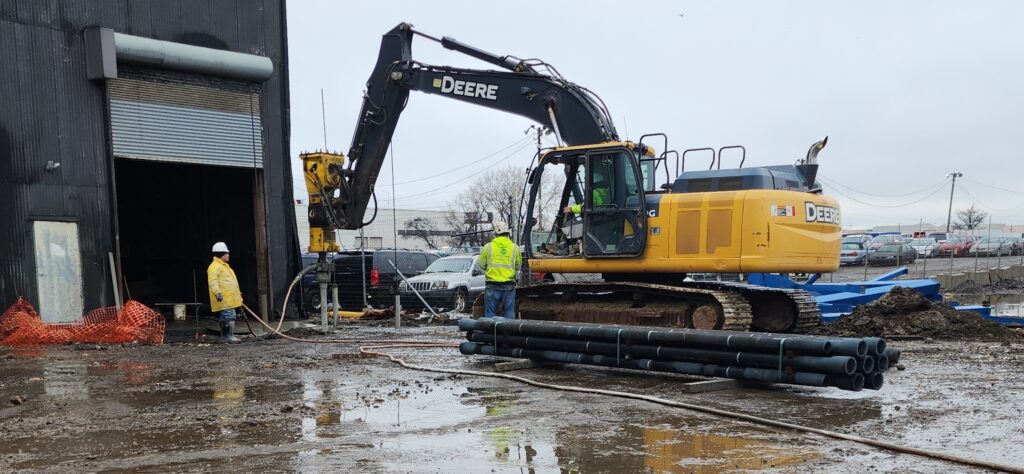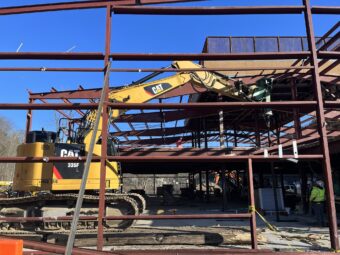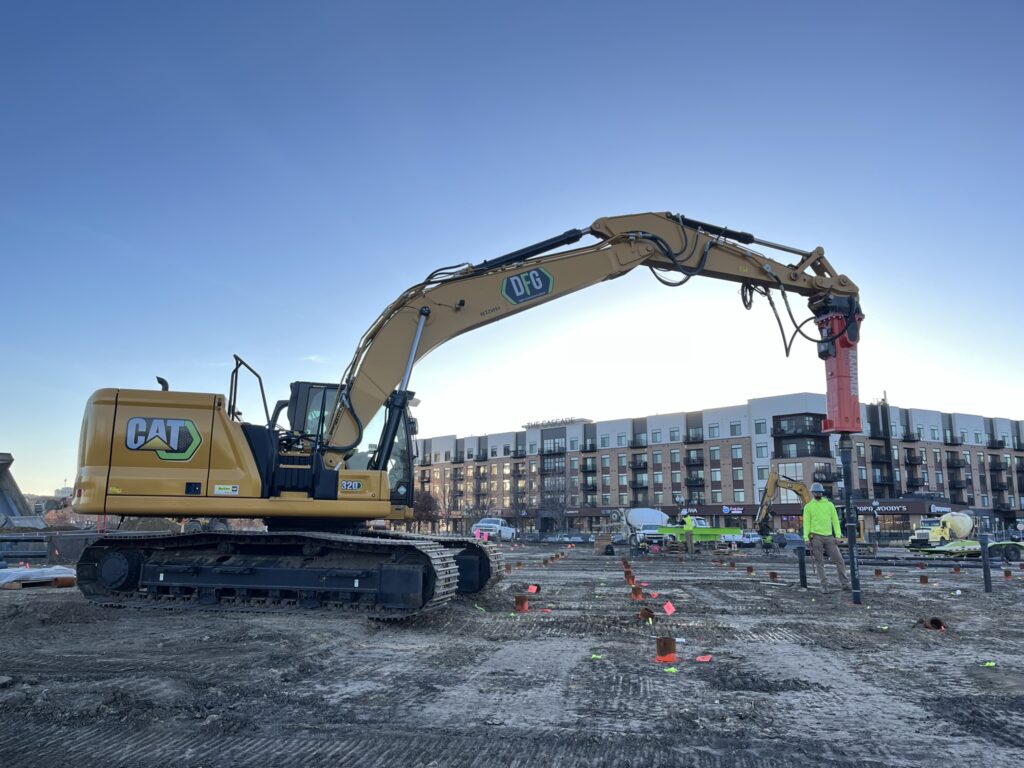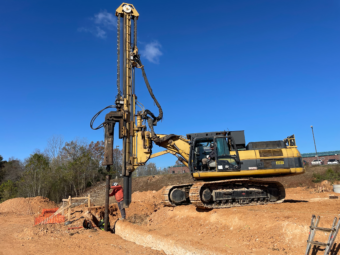Ductile Iron Piles Selected Over Helical Piles for Brandeis University Addition
Brandeis University’s Sherman Hall was slated for expansion with a 1-story building addition to accommodate the increased need for student housing. Construction was scheduled for the summer months to ensure that no disruption would occur to students on-campus. Helical Drilling rapidly installed a total of 20 Ductile Iron Piles in one production day at the site. The interior of the piles were then grouted and the piles were cut and capped – ready for incorporation into the pile caps.
The building addition was lightly-loaded but immediately adjacent to the existing building. The subsurface conditions encountered were highly variable. Soils present in the eastern portion of the building footprint included shallow granular fill underlain by very dense glacial till. The central and western portion of the site encountered loose to medium dense sand fill underlain by up to 7 feet of very soft peat and organics followed by glacial outwash sand and silt and then dense glacial till. Groundwater was encountered at about 5 feet below ground surface.
Construction was scheduled to occur during the summer months and required rapid installations to complete the work. Original plans required building foundations bear on shallow glacial till on the east end of the site, and helical piles in the area of deep fill and organics on the west end. An alternate approach using Ductile Iron Piles as an alternative to the helical piles was proposed and accepted by the design team due to the cost and schedule advantages.
The alternative design used 15 ton Ductile Iron Piles consisting of a 118/7.5 series pile (118 mm diameter pile with a 7.5 mm wall thickness). The low vibration, modular pile system is driven using a high frequency percussion hammer that generates vibrations of less than 0.5 inches / second during driving, allowing for installations in close proximity to the existing building. The piles were designed to penetrate through the fill, organics and outwash sand to terminate on the glacial till. Piles developed geotechnical capacity by achieving “set” on the dense conditions when the rate of installation was less than 1 inch of penetration in 50 seconds or more.





